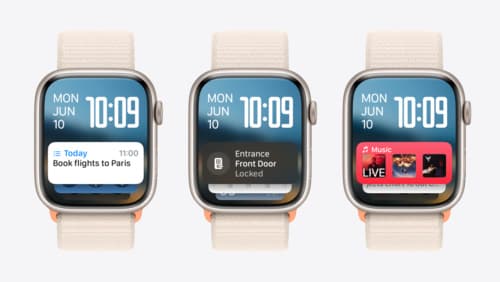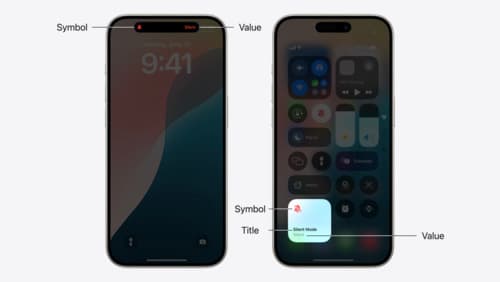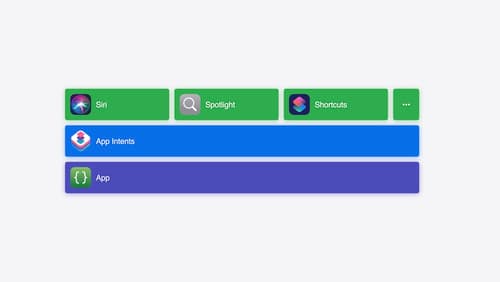How to create a widget?
Asked on 2024-08-03
1 search
To create a widget, you can follow these general steps based on the information provided in the WWDC sessions:
-
Define the Widget: You need a widget definition. This involves specifying the view and timeline provider. For more details, refer to the WidgetKit documentation.
-
Configuration Intent: Create a configuration intent that conforms to
WidgetConfigurationIntent. This intent should have a title and any parameters needed for configuration. -
Interactive Elements: If you want your widget to be interactive, you can use buttons and toggles. Implement the
performmethod in your widget's intent to specify the actions.- What’s new in watchOS 11 (05:57)
-
Accessory Widget Group: For watchOS, you can use the
AccessoryWidgetGrouptemplate to create a view in an accessory rectangular widget with up to three different pieces of content.- What’s new in watchOS 11 (07:51)
-
Relevance Context: Specify relevant contexts such as time of day or location to ensure your widget appears when it is most useful.
- What’s new in watchOS 11 (05:01)
For more detailed steps and examples, you can refer to the following sessions:
- Bring your app’s core features to users with App Intents
- What’s new in watchOS 11
- Extend your app’s controls across the system
These sessions cover various aspects of widget creation, including configuration, interactivity, and integration with system features.

What’s new in watchOS 11
Explore new opportunities on Apple Watch, including bringing Double Tap support to your watchOS app, making your Smart Stack widgets even more relevant and interactive, and displaying your iOS Live Activities in the Smart Stack.

Extend your app’s controls across the system
Bring your app’s controls to Control Center, the Lock Screen, and beyond. Learn how you can use WidgetKit to extend your app’s controls to the system experience. We’ll cover how you can to build a control, tailor its appearance, and make it configurable.

Bring your app’s core features to users with App Intents
Learn the principles of the App Intents framework, like intents, entities, and queries, and how you can harness them to expose your app’s most important functionality right where people need it most. Find out how to build deep integration between your app and the many system features built on top of App Intents, including Siri, controls and widgets, Apple Pencil, Shortcuts, the Action button, and more. Get tips on how to build your App Intents integrations efficiently to create the best experiences in every surface while still sharing code and core functionality.
